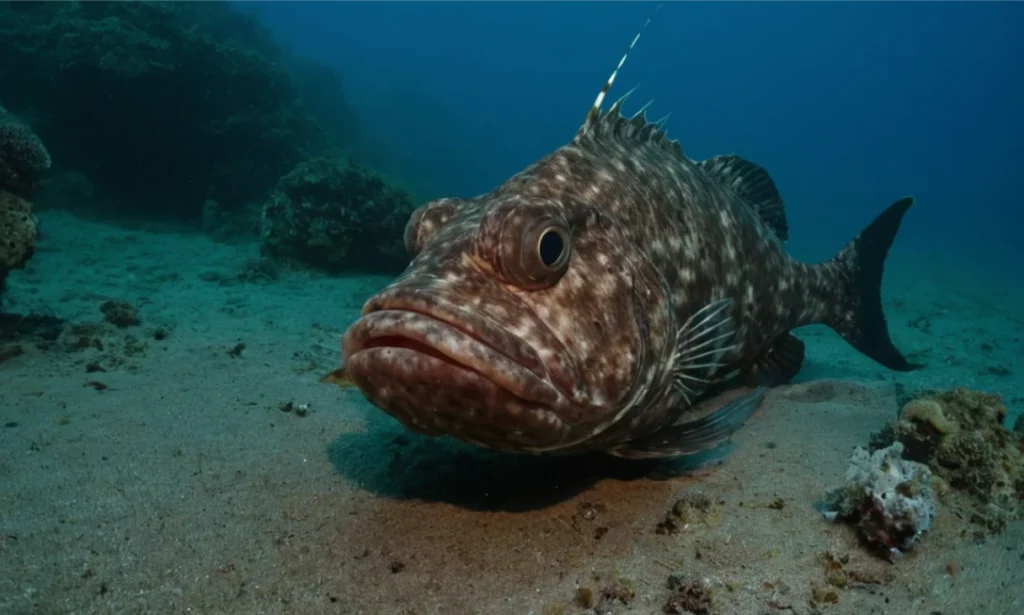14 Interesting Facts About Monkfish
Introduction
The monkfish, also known as the anglerfish, is a fascinating creature that inhabits the dark depths of the North Atlantic and Mediterranean oceans. With its wide mouth filled with sharp teeth and a growth on its head that acts as a fishing lure, the monkfish has adapted unique features to survive in its extreme environment.
Delve below the surface as we explore 14 interesting facts about the monkfish that shed light on this deep-sea denizen’s appearance, diet, habitat, and more. Whether you’re a marine biology enthusiast or are just curious to learn about one of the sea’s most bizarre-looking residents, read on to uncover fun tidbits about this ferocious fish.
Interesting Facts About Monkfish

- Camouflage experts: Monkfish have mottled brownish-gray skin that allows them to blend into murky seabeds and ambush prey. They can even change color to match their surroundings.
- Insatiable appetites: The monkfish’s huge head and oversized mouth allow it to swallow prey up to twice its own size! They feed on fish, crustaceans, mollusks, and even seabirds.
- Deceptive fishing lure: The “fishing rod” attached to the monkfish’s head has a bioluminescent tip that flashes to attract prey in the darkness. When victims swim closer to investigate, the monkfish attacks!
- Solitary stalkers: Monkfish spend most of their time camouflaged on the seafloor. They strike when prey wanders close enough but otherwise keep to themselves. Some even migrate long distances following food sources.
| Taste | Texture | Appearance |
|---|---|---|
| Sweet, mild flavor | Firm, meaty flesh | Ugly, bumpy exterior |
- Ugly yet delicious: Despite its menacing appearance, the monkfish has sweet, mild-tasting meat that is often compared to lobster tail. Its firm, meaty flesh makes it a popular ingredient.
- Living fossils: Monkfish are members of the Chimaeriformes order, which includes species whose ancestry dates back over 400 million years. Known as “living fossils,” these fish retain primitive characteristics over millions of years of evolution.
- Deep divers: Most monkfish live at depths of up to 1,800 feet, though some venture even deeper. Their bodies are adapted to withstand extreme cold and crushing pressure that would kill other fish species.
- Stealthy bottom-dwellers: Monkfish lack swim bladders, so they can’t actively swim. Instead, they walk along the seafloor using modified fins. This helps them sneak up on prey!
- Masters of camouflage: Monkfish can rapidly alter their skin color and pattern for the ultimate aquatic disguise. Special cells called chromatophores allow them to match seabed textures and even mimic eels, coral, or sponges!
- Deadly dentition: The monkfish’s mouth contains long, sharp teeth bent backward toward the throat, ensuring prey gets swallowed whole. It is impossible for prey to escape once caught.
- Light tricks: The glowing tip of a monkfish’s fishing rod appendage contains bacteria that produce light through bioluminescence. The monkfish can control the glow to attract prey.
- Bottom trawling threats: Overfishing from commercial bottom trawlers has led to declining monkfish populations. However, fisheries management programs now enforce catch quotas and equipment restrictions.
- Fearsome face: While its face may not win beauty pageants, the monkfish’s gigantic head, massive mouth, and long teeth are perfectly adapted for its deep-sea lifestyle.
- Leftovers feed others: Monkfish aren’t picky eaters. Any scraps left over after their whole-swallowing feeding frenzies get gobbled up by crabs, hagfish, sharks, and other scavengers. Nothing goes to waste in the ocean depths!
Conclusion
With its bizarre and terrifying appearance, the monkfish may look like something from a nightmare. However, its specialized adaptations and behaviors reveal an efficient deep-sea hunter. This fish carves out a formidable niche in the darkness of the seabed.
Hopefully this glimpse into the biology of the monkfish was as fascinating to read as the monkfish’s life is incredible to behold. Though this bottom-dweller keeps mostly hidden, it plays an integral role in its mysterious environment. Next time you crack open a monkfish tail for dinner, remember the predatory prowess locked within its meaty flesh!






